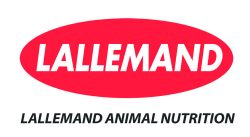This item has been supplied by a forage marketer and has not been edited, verified or endorsed by Hay & Forage Grower. 
During feedout, exposure to oxygen allows spoilage yeasts to become active again, which then starts the process of aerobic spoilage, causing the silage to heat, driving dry matter and nutrient losses and potentially leading to mold growth, severe spoilage and mycotoxin production. Losses can be as high as 30 to 40 percent of silage dry matter (DM),1 and the most highly digestible forage nutrients are lost first.
To help prevent these losses, producers should use best feedout management practices, such as:
“Using these strategies as part of your overall silage management program can help minimize yeast growth and help you to retain more valuable nutrients for feeding and help increase profitability,” Dr. Charley says.

Now that corn harvest is complete, producers hopefully can look forward to having quality silage that is stable and well protected. The next steps are to monitor and maintain the integrity of the plastic covering (or bag silos, or bale wrap) and manage feedout to prevent heating and spoilage. “Aerobic spoilage is one of the main causes of losses in silage production,” explains Bob Charley, Ph.D., Forage Products Manager, Lallemand Animal Nutrition. “The enemy of high-quality silage is oxygen, and opening new silage for feedout re-introduces oxygen into the silage mass. Even if producers have done everything right up to this point, there can still be significant losses at feedout without proper management practices.”
During feedout, exposure to oxygen allows spoilage yeasts to become active again, which then starts the process of aerobic spoilage, causing the silage to heat, driving dry matter and nutrient losses and potentially leading to mold growth, severe spoilage and mycotoxin production. Losses can be as high as 30 to 40 percent of silage dry matter (DM),1 and the most highly digestible forage nutrients are lost first.
To help prevent these losses, producers should use best feedout management practices, such as:
- Avoid removing the plastic cover too far ahead of feeding;
- Keep the face as flat and tight as possible
- Feed out at a rate fast enough to avoid heating;Do not leave silage sitting in loose piles to compost
- Minimize time between taking silage from the face and mixing in the ration
- Discard all spoiled or moldy silage; and
- Use an inoculant that is research-proven to prevent heating and spoilage at ensiling.
“Using these strategies as part of your overall silage management program can help minimize yeast growth and help you to retain more valuable nutrients for feeding and help increase profitability,” Dr. Charley says.
Lallemand Animal Nutrition is committed to optimizing animal performance and well-being with specific natural microbial product and service solutions. Using sound science, proven results and knowledge, Lallemand Animal Nutrition develops, manufactures and markets high value yeast and bacteria products ─ including probiotics, silage inoculants and yeast derivatives. Lallemand offers a higher level of expertise, leadership and industry commitment with long-term and profitable solutions to move our partners Forward. Lallemand Animal Nutrition is Specific for your success. For more information, please visit www.lallemandanimalnutrition.com.

